Related Research Articles

The United States Coast Guard (USCG) is the maritime security, search and rescue, and law enforcement service branch of the United States Armed Forces and one of the country's eight uniformed services. The Coast Guard is a maritime, military, multi-mission service unique among the U.S. military branches for having a maritime law enforcement mission with jurisdiction in both domestic and international waters and a federal regulatory agency mission as part of its duties. It operates under the U.S. Department of Homeland Security during peacetime, and can be transferred to the U.S. Department of the Navy under the Department of Defense by the U.S. President at any time, or by the U.S. Congress during times of war. Prior to its transfer to Homeland Security, it operated under the Department of Transportation from 1967 to 2003 and the Department of the Treasury from its inception until 1967. A congressional authority transfer has only happened once: in 1917, during World War I. When the U.S. entered World War II in December 1941, the Coast Guard had already been transferred by Franklin Roosevelt in November.

Los Angeles County, officially the County of Los Angeles, and sometimes abbreviated as L.A. County, is the most populous county in the United States and in the U.S. state of California, with more than ten million inhabitants as of the 2020 census. It is the most populous non–state-level government entity in the United States. Its population is greater than that of 41 individual U.S. states. Compared with other metropolitan areas, it has the 2nd largest economy in the world, with a nominal GDP of more than $1.0 trillion. At 4,083 square miles (10,570 km2) and with 88 incorporated cities and many unincorporated areas, it is larger than the combined areas of Delaware and Rhode Island. The county is home to more than one-quarter of California residents and is one of the most ethnically diverse counties in the United States. Its county seat, Los Angeles, is also California's most populous city and the second most populous city in the United States, with about four million residents.

Mendocino County is a county located on the North Coast of the U.S. state of California. As of the 2010 census, the population was 87,841. The county seat is Ukiah.
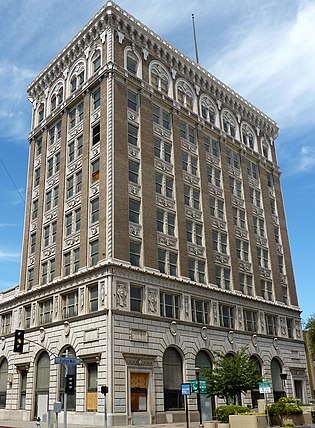
Fresno is a city in and the county seat of Fresno County, California, United States. It covers about 112 square miles (290 km2) in the center of the San Joaquin Valley, the southern portion of California's Central Valley.
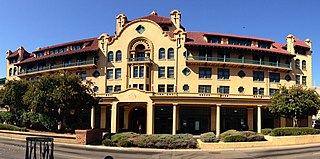
Stockton is a city and the county seat of San Joaquin County in the Central Valley of the U.S. state of California. Stockton was founded by Carlos Maria Weber in 1849 after he acquired Rancho Campo de los Franceses. The city is named after Robert F. Stockton, and it was the first community in California to have a name not of Spanish or Native American origin. The city is located on the San Joaquin River in the northern San Joaquin Valley and had an estimated population of 312,697 by the California Department of Finance for 2019. Stockton is the 13th largest city in California and the 62nd largest city in the United States. It was named an All-America City in 1999, 2004, 2015 and again in 2017.
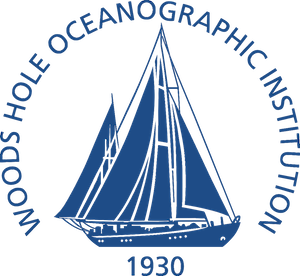
The Woods Hole Oceanographic Institution is a private, nonprofit research and higher education facility dedicated to the study of marine science and engineering.

Eureka is the principal city and county seat of Humboldt County in the Redwood Empire region of California. The city is located on U.S. Route 101 on the shores of Humboldt Bay, 270 miles (435 km) north of San Francisco and 100 miles (161 km) south of the Oregon border. At the 2010 census, the population of the city was 27,191, and the population of Greater Eureka was 45,034.
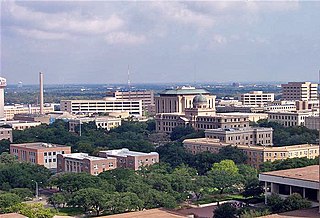
College Station is a city in Brazos County, Texas, situated in East-Central Texas in the heart of the Brazos Valley, in the center of the region known as the Texas Triangle. It is 83 miles northwest of Houston and 87 miles (140 km) east-northeast of Austin. As of the 2010 census, College Station had a population of 93,857, which had increased to an estimated population of 117,911 as of July 2019. College Station and Bryan together make up the Bryan-College Station metropolitan area, the 13th-largest metropolitan area in Texas with 273,101 people as of 2019.

The Orange County Transportation Authority (OCTA) is the public sector transportation planning body and mass transit service provider for Orange County, California in the Los Angeles metropolitan area. The agency is the second-largest public transportation provider in the metropolitan area after Los Angeles County Metropolitan Transportation Authority Its ancestor agencies include not only the prior Orange County Transit District but also such diverse entities as the Pacific Electric Railway and the South Coast Transit Corporation. In 2005, OCTA was judged America's Best Public Transportation System by the American Public Transportation Association, for its record gains in bus and Metrolink commuter trains ridership that it operates or funds. OCTA also operates the 91 Express Lanes.

Tomales Bay is a long, narrow inlet of the Pacific Ocean in Marin County in northern California in the United States. It is approximately 15 mi (24 km) long and averages nearly 1.0 mi (1.6 km) wide, effectively separating the Point Reyes Peninsula from the mainland of Marin County. It is located approximately 30 mi (48 km) northwest of San Francisco. The bay forms the eastern boundary of Point Reyes National Seashore. Tomales Bay is recognized for protection by the California Bays and Estuaries Policy. On its northern end, it opens out onto Bodega Bay, which shelters it from the direct current of the Pacific. The bay is formed along a submerged portion of the San Andreas Fault.

California State University, Sacramento is a public university in Sacramento, California. Founded in 1947 as Sacramento State College, it is the eleventh oldest school in the 23-campus California State University system. The university enrolls approximately 31,500 students annually, has an alumni base of more than 250,000 and awards 9,000 degrees annually. The university offers 151 different Bachelor's degrees, 69 Master's degrees, 28 types of teaching credentials, and 5 Doctoral degrees.

University of the Pacific is a private Methodist-affiliated university with its main campus in Stockton, California, and graduate campuses in San Francisco and Sacramento. It is California's first university, the first independent coeducational campus in California, and both the first conservatory of music and first medical school on the West Coast.

Pacific Union College (PUC) is a private liberal arts college in Napa Valley, California. It is the only four-year college in Napa County. It is a coeducational residential college with an almost exclusively undergraduate student body.

Northwest Seaport Maritime Heritage Center is a nonprofit organization in Seattle, Washington dedicated to the preservation and interpretation of Puget Sound and Northwest Coast maritime heritage, expressed through educational programs and experiences available to the public aboard its ships. The organization owns three large historic vessels docked at the Historic Ships' Wharf in Seattle's Lake Union Park; the tugboat Arthur Foss (1889), Lightship 83 Swiftsure (1904), and the halibut fishing schooner Tordenskjold (1911). These vessels are used as platforms for a variety of public programs, ranging from tours and festivals to restoration workshops and vocational training.

Albion is a census-designated place in Mendocino County, California. It is located 15 miles (24 km) south of Fort Bragg, at an elevation of 174 feet. Albion had a population of 168 at the 2010 census.
Williams–Mystic, the Ocean and Coastal Studies Semester of Williams College and Mystic Seaport Museum, is an interdisciplinary semester program based at the Mystic Seaport Museum in Mystic, Connecticut.
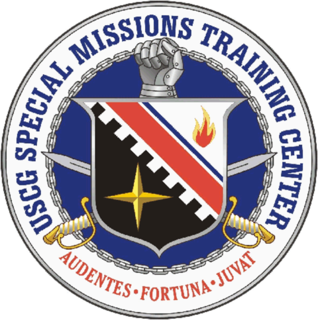
The Joint Maritime Training Center (JMTC), also known as the Special Missions Training Center (SMTC), is a joint United States Coast Guard, Navy, and Marine Corps training facility located on Camp Lejeune, North Carolina. JMTC's mission is to provide relevant and credible Maritime Security Training and Operational Testing and Evaluation in support of Department of Defense and Department of Homeland Security missions. JMTC comprises four main divisions: Weapons, Port Security, Engineering / Logistics, and Fast Boat.

Abernathy Field Station is a 57-acre (230,000 m2) outdoor ecology classroom serving Washington & Jefferson College.

Edward F. Ricketts State Marine Conservation Area is one of four small marine protected areas located near the cities of Monterey and Pacific Grove, at the southern end of Monterey Bay on California’s central coast. The four areas together encompass 2.96 square miles (7.7 km2). Within SMCAs fishing and take of all living marine resources is prohibited except the recreational take of finfish by hook-and-line and the commercial take of giant and bull kelp under certain conditions.

California during World War II was a major contributor to the World War II effort. California's long Pacific Ocean coastline provided the support needed for the Pacific War. California also supported the war in Europe. After the Japanese attack on Pearl Harbor, Hawaii, on December 7, 1941 most of California's manufacturing was shifted to the war effort. California became a major ship builder and aircraft manufacturer. Existing military installations were enlarged and many new ones were built. California trained many of the troops before their oversea deployment. Over 800,000 Californians served in the United States Armed Forces. California agriculture, ranches and farms were used to feed the troops around the world. California's long coastline also put the state in fear, as an attack on California seemed likely. California was used for the temporary and permanent internment camps for Japanese Americans. The population of California grew significantly, largely due to servicemen who were stationed at the new military bases/training facilities and mass influx of workers from around the U.S. in the growing defense industries. With all the new economy activity, California was lifted out of the great depression. Over 500,000 people moved to California from other states to work in the growing economy. California expanded its oil and mineral production to keep up with the war demand.
References
- 1 2 Albion Field Station Archived 2010-10-26 at the Wayback Machine , Pacific Union College, retrieved 2010-08-23.
- 1 2 3 "Albion Biological Field Station – a quiet summer place to work, play and learn", Independent Coast Observer, July 20, 2007.
- ↑ Pacific Union College, Albion Field Station Archived 2009-05-02 at the Library of Congress Web Archives, California Department of Boating and Waterways, retrieved 2010-08-23.
- ↑ "PUC opens ears, books, public process", St. Helena Star, May 3, 2007.
